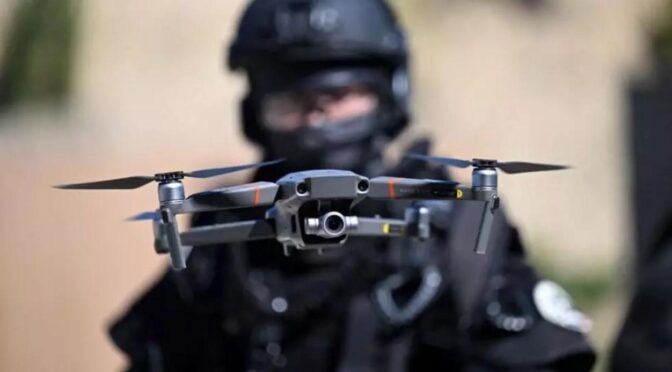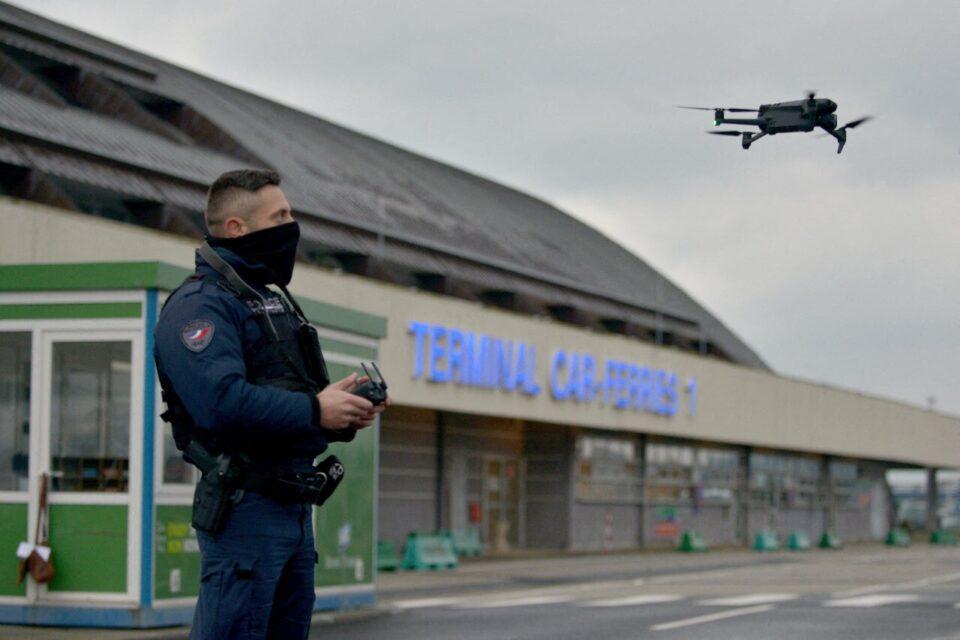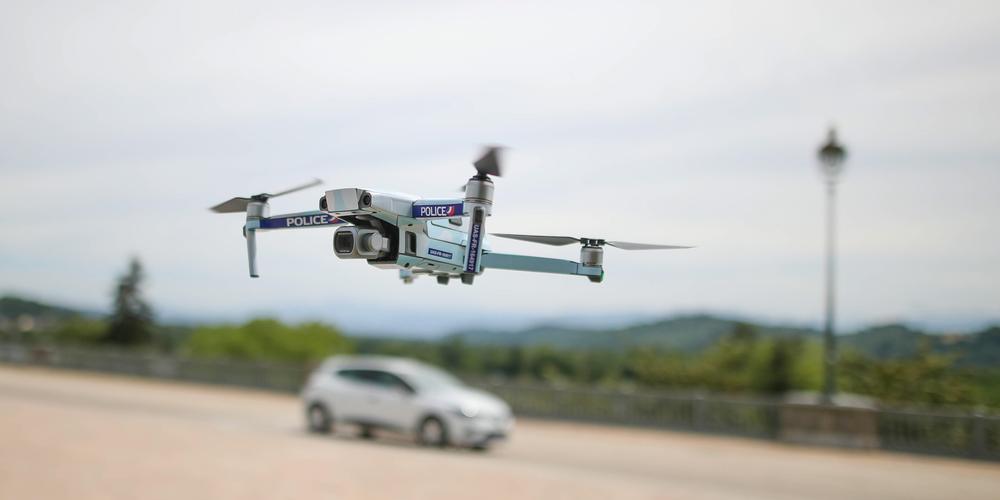
Drones, the new Swiss army knives of the border police
La Presse de la Manche, January 11, 2025 (excerpt)
For the past year, drones have been used at the port of Cherbourg-en-Cotentin to monitor the restricted zone. This high-tech equipment is now being used for other missions.
For just over a year, the Prefect of the Manche department has authorized the use of drones to monitor the border zone of the port of Cherbourg-en-Cotentin, the restricted access zone (ZAR) and its immediate surroundings. This is where migrants are accustomed to moving around. The drones can be adjusted to suit the weather conditions, providing high-quality images and precise positioning.
“They can fly at a maximum altitude of 120 meters, in complete silence. This means they can access places that were previously inaccessible by car, such as the rock face near the Mielles area, which is a common hiding place for migrants”, explains Chief Brigadier Anthony, a remote pilot based in Cherbourg. The thermal cameras fitted to their drones also help them to discover where migrants are hiding, particularly at night.

Versatility
In 2024, Cherbourg’s airborne resources brigade, created in May, lent its support to judicial missions, such as the surveillance of drug trafficking (notably along the coastline after the discovery of new bundles of narcotics on the beaches) or the securing of sensitive sites, at the request of public prosecutors.
“In June, we lent our support to a police operation at a Traveller camp in Saint-Lô, which took place after shots were fired at neighbouring houses,” comments Chief Brigadier Anthony. “We were also called in to monitor the area around the Cherbourg mosque and certain sectors of Les Provinces after the urban violence that followed the disappearance of young Sulivan a few months ago. This is one of our strengths. The drone’s aerial vision enables us to detect public disorder very quickly. With the images sent back to the command post in real time, it enables us to establish an intervention strategy, support the ground staff and guide them in putting an end to the disturbance. It was really satisfying for us,” says Brigadier-Chef Anthony.

On Saturday, January 11, 2025, they will be in Granville to surveil the area around the stadium for the local club’s gala match against Bordeaux. In August, they accompanied the parade at the Lorient Interceltic Festival, and in November, they provided security around the Palais des Sports in Caen-la-Mer, which was subject to heightened security measures for the France-Israel women’s basketball match. They were also present in Angers for an official visit by former French Prime Minister Michel Barnier, and on sensitive nuclear convoy missions.
But one of the highlights was their three-week involvement in the anti-drone operation along the route of the Olympic Flame, between Châteauroux and Cherbourg. Their job was to neutralize all the risks posed by drones. For the 80th anniversary of the D-Day landings in La Manche, the two civil servants were mobilized for the ceremonies in Saint-Lô and Cherbourg, attended by the Head of State.

In Strasbourg, the prefecture makes drone video surveillance commonplace
Rue89, January 21, 2023 (excerpt)
It’s a classic development in security systems. In Strasbourg, drones were first used in working-class neighborhoods. Then they were used to discreetly monitor demonstrations. Then they appeared at events such as the Christmas market. But now, everyday life seems to suffice. For ten days in January, the national police force is authorized to use three drones to monitor a very large area of the city.
As a first step, on December 20, 2024, the Bas-Rhin prefecture issued a decree authorizing the “capture, recording and transmission of images” using drones on January 3, 4, 10, 11, 17 and 18 (three weekends), as well as during the European parliamentary session from January 22 to 25. This will cover the streets around the Bas-Rhin Jewish center, the train station and the European institutions. On January 17, the prefect issued a new decree adding the whole of Strasbourg’s Grande Île to the zone potentially under surveillance from January 22 to 25.
To justify itself, the Bas-Rhin prefecture points to the various attacks that have occurred in France since 2012, those foiled since 2020, the 2018 Christmas market attack, Al Qaeda’s threats against the West, and the arrest of a neo-Nazi in Alsace in 2024. Sure, but why do the police need drones on these specific dates in Strasbourg? The prefecture doesn’t really justify this point in its decrees.

Since the law allows it, Strasbourg’s skies have sometimes been the flying ground for these surveillance drones. In 2024 , the State authorized the use of drones in more than ten separate decrees – for a farmers’ demonstration in February and November, against urban rodeos in Hautepierre, Meinau, Neuhof and Elsau in April, for the Strasbourg – Metz football match in May, to combat burglaries in December and for the duration of the Christmas market.
In 2023, three lawyers challenged the legitimacy of using drones to monitor the Christmas market. While the Conseil d’Etat ruled in summary proceedings that there was no reason to suspend the authorization given by the prefect, the administrative court has not yet ruled on the merits of the case. The lawyers argue that the invasion of privacy represented by this surveillance is disproportionate to the benefits of using drones.
As for the authorization of January 2025, this is the first time in Strasbourg that a European parliamentary session alone has prompted the deployment of this surveillance tool. Also, the Fridays and Saturdays designated by the prefectoral decree do not correspond to announced events.
Contacted to find out which days in January are authorized for drone surveillance, the Bas-Rhin prefecture had not replied by the time this article was published.
Source: Sans Nom
